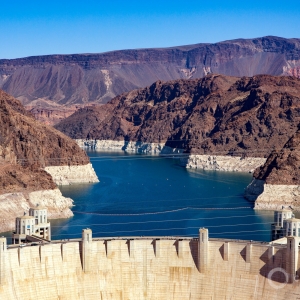The Stream, August 13, 2021: Argentina’s Agricultural Sector Suffering Amid Parana River Drought
YOUR GLOBAL RUNDOWN
- Drought in southern Brazil is hindering grain transports in Argentina.
- In California, residents in Santa Clara County are cutting their water use after an emergency order in June and a LA sewage treatment plant is diverting millions of gallons of clean drinking water after a massive spill into the Santa Monica Bay last month.
- Heavy rain is causing flooding in Turkey.
- Compounding disasters like cyclones and flooding plague India.
Water levels on Lake Erie are predicted to remain lower than last year.
“Levels on all the Great Lakes are based on Mother Nature. It’s very difficult (at this time) to determine what the levels are going to be next year.” – Keith Koralewski, chief of the Corps of Engineers’ water management team in Buffalo, New York. The latest water level report from the U.S. Army Corps of Engineers found that Lake Erie’s water level was 20 inches higher than the long-term average for July. Even so, the Erie Times-News reports that even in the wettest of scenarios, the latest six-month forecast for the Great Lake will remain as much as 12 inches lower than last year. Although experts say its too soon to predict what lake levels will be next summer, some—like Matt Greene, the operations manager for Presque Isle State Park—are hopeful that levels will stay low for the foreseeable future.
IN RECENT WATER NEWS
In Case You Missed It:
Dry Wells in Northern California Bring Home the Costs and Stresses of Drought – In this hot, dry summer, household wells are failing and wait lists for replacements stretch up to a year.
Climate Change Is Intensifying the Water Cycle, New IPCC Report Finds – The climate crisis will jeopardize key sources of fresh water and make extreme weather events more severe. But experts say there’s still time to prevent the worst outcomes.
Drought in the American West
Your need-to-know drought coverage for the week.
Santa Clara County Residents Heed Water Warning, Cut Daily Use
In the two months since Santa Clara County’s water district declared a water shortage emergency, data show a downward trend of water usage among residents in the California county. KALW reports that the county mandated that local water retailers cut water use by 15 percent compared to 2019 on June 9 of this year. To meet that goal, the county regulates irrigation, limiting it to two days a week during specific hours. Individual residents also seem to be responding positively to the district’s conservation programs and incentives.
LA Sewage Treatment Plant Diverting Millions of Gallons of Clean Water After Massive Spill
A massive spill into the Santa Monica Bay due to problems at a Los Angeles sewage treatment plant last month severely reduced the region’s capacity to recycle water. According to the Los Angeles Times, officials have been forced to divert millions of gallons of clean drinking water amid worsening drought conditions. Experts say the incident has called into question the plant’s ability to function as the climate continues to warm.
TODAY’S TOP WATER STORIES, TOLD IN NUMBERS
12 VILLAGES
Reuters reports that unusually heavy rain in Turkey caused flooding on Wednesday. The inundation caused a bridge in the city of Bartin to collapse, injuring 13 people, and left 12 villages without power.
25 PERCENT
Drought in southern Brazil has lowered water levels severely on a major grain transport river in Argentina, Reuters reports. Ships sailing from the city of Rosario are carrying up to 25 percent less cargo than normal down the Parana River, where water levels are reaching historic lows amid a three-year drought.
- In context: HotSpots H2O: Argentina’s Paraná River Drops to 77-Year Low, Resulting in Economic Loss and Wildfires
ON THE RADAR
The Hindustan Times reports that compounded, extreme weather events described in the latest report from the Intervgovernmental Panel on Climate Change (IPCC) are already evident across India. Simultaneous disasters like severe cyclonic storms, floods, and heatwaves are becoming more common in South Asia. In May, the cyclonic storm Tauktae tore through India with wind speeds of 180-190kmph, bringing along with it intense rainfall in Mumbai.
- Why it matters: Constant, compounding disasters are exhausting emergency response, Circle of Blue reported last month. The interval between emergencies is shortening, or in some cases disappearing altogether. Undermining the recovery effort is the fact that people keep putting themselves in harm’s way. Homes built in floodplains, along coasts, and in flammable forests increase exposure to hazards at the same time that a warming climate is amplifying their intensity.
Jane is a Communications Associate for Circle of Blue. She writes The Stream and has covered domestic and international water issues for Circle of Blue. She is a recent graduate of Grand Valley State University, where she studied Multimedia Journalism and Women, Gender and Sexuality Studies. During her time at Grand Valley, she was the host of the Community Service Learning Center podcast Be the Change. Currently based in Grand Rapids, Michigan, Jane enjoys listening to music, reading and spending time outdoors.






Leave a Reply
Want to join the discussion?Feel free to contribute!